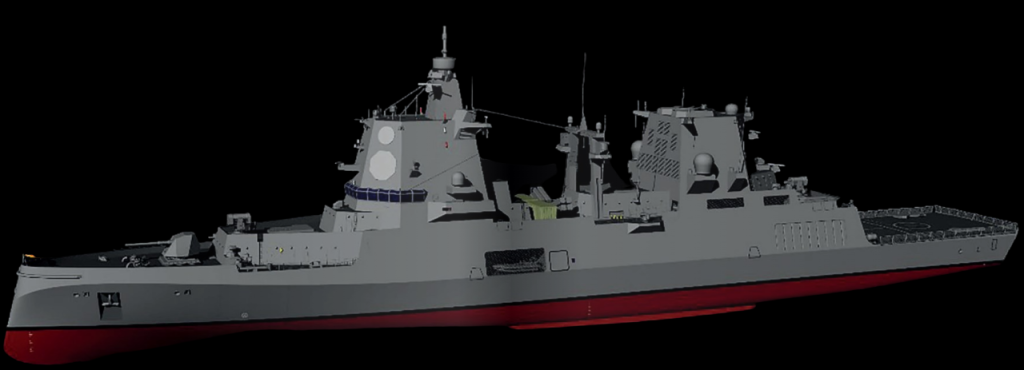New information has surfaced regarding the planning status of the Next Generation Frigate (NGF) for the German Navy, shedding light on the potential future armament and sensor suite for the F127 class of ships.
Following an initial project approval by the Inspector General of the Bundeswehr in February 2023, the project to replace the Navy’s F124 Sachsen class air defense frigates has reached its second milestone, by opting for a tender allowing national ship designs paired with the American AEGIS combat management system (CMS) to compete. The tender criteria was contracted to be modelled by the design firm MTG, using the TKMS MEKO A400 AMD ship design as a basis, giving the shipbuilder a headstart in the competition. At this stage it is unclear whether there will be any other bidders, as potential offers would require a teaming effort with local shipyards, the biggest one being the NVL Group which has already mentioned its intent to potentially work with TKMS.

The finalised tender is to be presented by September 2024, allowing for a type selection by the end of the first quarter of 2025. To ensure a timely start for the project, procurement authorities have already begun work on the necessary Foreign Military Sales (FMS) case to acquire necessary components from the United States. The german procurement agency BAAINBw has provided details of the current plans in a recent statement to Defense Archives.
The FMS request is to include:
- AEGIS CMS hardware, integration and logistics services
- SM-2IIIC AAW missiles
- SM-6 AAW/BMD missiles
- Tomahawk cruise missiles
The frontrunner for the ship’s main radar sensor is the Lockheed Martin SPY-7, but the evaluations of other options are still ongoing. There are also considerations on whether the class should also have a different CMS, citing ITAR concerns and possible black boxes within the AEGIS system. The suite in question is the CMS 330, made by Lockheed Martin Canada. The addition of a second CMS offers potential reductions in time and cost to integrate national sensors and weaponry, while relying on a more open, ITAR-free architecture.
Besides the already mentioned armament, the class is confirmed to receive the 3SM Tyrfing anti-ship missile, a joint german-norwegian missile project aimed at replacing the current Naval Strike Missile (NSM) made by Kongsberg. Additionally the ship will be fitted with the RIM-116 Block 2B Rolling Airframe Missile Close-in weapon system (CIWS) and is prepared to house a High Energy Laser (HEL) weapon for self defense. MBDA Germany has been contracted to develop a second laser weapon demonstrator (LWD) in the power class of up to 200kW following the first succesful HEL weapon trials onboard the Sachsen F124 class frigate. At this stage it is unknown whether the F127 tender will include a concrete requirement for an immediate HEL capability.
One of the F127’s core requirements besides Anti-aircraft warfare (AAW) and ballistic missile defense (BMD) is the defense against hypersonic weapon systems. To meet this requirement, the F127 needs a new interceptor to cope with this new type of threat. The presently considered alternatives revolve around two EU initiatives, HYDIS and HYDEF. Both studies share the mutual objective of creating an endo-atmospheric interceptor with the capability to protect against hypersonic weapons. However it is unclear if, or how, either of the two projects will materialise, creating risks of implementing the new capability on the F127 class on time.
After the completion of the FMS process and type selection it is planned to finalise the development and acquisition contract for six F127 frigates by the second half of 2026. The first ship of the class is planned to be ready by 2033-2034.
